Photographs: Getty Images
If you have a question relating to cricket and did not know who to ask, bounce them off to Rajneesh Gupta. Each week he will pick questions readers send him and provide answers. Your queries should be addressed to: Ask Rajneesh on Facebook or askrajneesh@rediffmail.com
Rajneesh's answers some questions he received from readers last week:
I enjoy reading the statistics you uncover on rediff. I was wondering if you can confirm if 2011 was the first World Cup that started and concluded with a boundary scored by the same country (Sehwag's first ball four against Bangladesh & Dhoni's six against Sri Lanka in the final). - Anuj Jain
Thanks for the compliments, Anuj. The ball-by-ball details of all World Cup matches is not available, but we can still come to a conclusion by eliminating the unlikely entries. Seven out of ten World Cup finals were won by the sides batting first, so this leaves us with only three likely cases -- Sri Lanka in 1996, Australia in 1999 and, of course, India in 2011.
Sri Lanka won the World Cup 1996, beating Australia in the final, and the winning hit was a four by Arjuna Ranatunga (off Glenn McGrath), but Australia did not feature in the opening game of 1996 World Cup, which was, surprisingly, contested between England and New Zealand.
Australia won the World Cup 1999, beating Pakistan in the final, and the winning hit was a boundary four by Darren Lehmann (off Saqlain Mushtaq), but, again, Australia did not appear in the first match of 1999 World Cup, which was played between hosts England and Sri Lanka.
So, it is clear that India is the only World Cup-winning side to achieve the unique distinction of starting and finishing a World Cup with a boundary.
Previous column:
Has anyone carried his bat in both innings of a Test?
Image: Len HuttonPhotographs: Getty Images
Dravid carried his bat in the Oval Test. I was wondering who made the highest score and lowest score in a Test while carrying his bat? Also, who has done this most often? Has someone carried his bat in both innings of a Test? - Chandranil Bhattacharjee
Taking, strictly, all those innings into consideration, where a side lost all 10 wickets, there are 42 instances where a batsman opened his team's innings and remained unbeaten at the fall of 10th wicket. West Indian Desmond Haynes remains the only one to do so on THREE occasions, while England's Len Hutton and New Zealand's Glenn Turner carried their bats on two occasions each.
26 batsmen have scored centuries while carrying their bat, Glenn Turner being the only one to score two centuries. Turner's 223 not out against West Indies at Kingston in 1971-72 is the highest such score. At the other end of the scale, South Africa's Augustus Tencred carried his bat while scoring only 26 not out (in his team's total of 47) against England at Cape Town in 1888-89.
No one has carried the bat in both innings of a Test. However, Haynes came very close to this unique feat. Against New Zealand at Dunedin in 1979-80, he opened the innings for the West Indies and was the last man to be dismissed in both the innings!
Dravid 7th batsman to remain not-out and open following-on
Image: Rahul DravidPhotographs: Getty Images
Has it ever happened that a man who remained not-out at the end of a team's first innings also came out to open after following-on? Just like Dravid did in The Oval Test. - Anurag Mathur
Dravid was, in fact, the seventh batsman to perform this feat. Here is the complete list in chronological order:
| Batsman | Score | Opponent | Venue | Season |
| AB Tencred (SA) | 26* | v England | Cape Town | 1888-89 |
| JW Zulch (SA) | 45* | v England | Cape Town | 1909-10 |
| L Hutton (Eng) | 202* | v West Indies | The Oval | 1950 |
| FM Worrell (WI) | 191* | v England | Nottingham | 1957 |
| S Wettimuny (SL) | 63* | v New Zealand | Christchurch | 1982-83 |
| DL Haynes (WI) | 75* | v England | The Oval | 1991 |
| R Dravid (Ind) | 146* | v England | The Oval | 2011 |
What is Virender Sehwag's record in the last three overseas series he played outside the Asian subcontinent? - Harish K
Sehwag's last three overseas series outside the subcontinent were the recently-concluded series against England, v South Africa in December 2010-January 2011 and v New Zealand in March-April 2009.
His performances in these series are as under:
v England: Tests-2,Runs-41, Hs-33, Avg-10.25, 50s-0
v South Africa: Tests-3, Runs-144, Hs-63, Avg-24.00, 50s-1
v New Zealand: Tests- 3, Runs-140, Hs-48, Avg-28.00, 50s-0
Summary: Tests-8, Runs-325,Hs-63, Avg-21.66, 50s-1
More ODI runs together: Tendulkar or Ganguly?
Image: Sachin Tendulkar (left) with Sourav GangulyPhotographs: Getty Images
Throughout the years Tendulkar and Ganguly played ODIs together, who scored more runs? - Somnath Pal
Sachin Tendulkar and Sourav Ganguly appeared in 238 ODIs together for India. Tendulkar aggregated 10,091 runs, at an average of 48.05, with 29 centuries and 52 fifties. Ganguly aggregated 9,027 runs, at an average of 42.78, with 20 centuries and 52 fifties.
If a batsman is out stumped or run-out off a no-ball, which is the last ball of a one-day innings, will the next batsman come in to play the final ball? - Kiran Lele
A batsman cannot be out stumped off a no-ball; he can only be out -- Handled the ball, Hit the ball twice, Obstructing the field or Run-out. Since the no-ball is an illegitimate delivery, the bowler has to bowl it again, and, as such, the next batsman needs to come to play the final ball provided the target has already not been achieved.
Chris Martin has most pairs in Test cricket
Image: Chris MartinPhotographs: Reuters
Which player has suffered the misfortune of bagging most pairs in Test cricket? - Sumanth Patwardhan
Five batsmen -- India's Bhagwat Chandrasekhar, West Indies' Courtney Walsh and Mervyn Dillon, Sri Lanka's Marvan Atapattu and Muttiah Muralitharan -- each suffered the ignominy of registering a duck in both innings of a Test on four occasions.
However, they don't share the world record of bagging most pairs. New Zealand's Chris Martin is the sole owner of this entirely unwanted record, bagging SIX pairs in his career of 61 Tests. In fact, his wickets tally easily beats his run-tally -- 199 wickets and only 109 runs! In 89 innings, Martin scored 29 ducks. On 25 occasions he remained unbeaten on 0 and only once did he manage to get to double figures!
How many Indian players have appeared in just one Test?
Image: Narendra HirwaniPhotographs: Getty Images
While having a look at the Test career records of Indian players on a cricket website, I was amazed by the number of Indian players who have appeared in just one Test. Can you please give a comparative table for all Test-playing countries to show where does India stand? - Amrit Anand
Very good spot, Amrit! 270 players have so far appeared for India and 47 of them have played only one Test. That's a percentage of 17.40%. Among 10 Test-playing nations, only South Africa and Pakistan have a better record. The percentage of one Test wonders for each country is given below. For this purpose, the appearances of players who played for more than one country have been counted for both the countries.
|
| Test players | One-Test wonders | %age |
| South Africa | 309 | 64 | 20.71 |
| Pakistan | 206 | 40 | 19.42 |
| India | 270 | 47 | 17.41 |
| Zimbabwe | 78 | 13 | 16.67 |
| Australia | 419 | 68 | 16.23 |
| England | 650 | 92 | 14.15 |
| West Indies | 292 | 41 | 14.04 |
| New Zealand | 250 | 29 | 11.60 |
| Bangladesh | 59 | 6 | 10.17 |
| Sri Lanka | 116 | 10 | 8.62 |
Is it possible to find out who has bowled the longest spell in a Test match? - Ajesh Jaiswal
Record like this can only be unearthed by the closer scrutiny of running scoresheets, as conventional scorecards don't give such minute details. I am indebted to Australian statistician Charles Davis for providing a list of possible leaders, although one or two instances might have been missed here.
India's Narendra Hirwani seems to hold the record. He bowled a marathon spell of 59 overs in England's second innings of The Oval Test in 1990. In fact, Hirwani bowled all his 59 overs in one single spell. South Africa's Athol Rowan bowled 44-eight ball overs (equivalent to 58.4 six-ball overs) against England at Durban in 1948-49. Gary Sobers bowled 41 eight-ball overs (equivalent to 54.4 six-ball overs) against Australia at Melbourne in 1960-61. South Africa's Hugh Tayfield, Australia's Tom Veivers (twice!), and George Giffen and Pakistan's Mohammad Nazir are the other bowlers to bowl 50 overs in a spell.

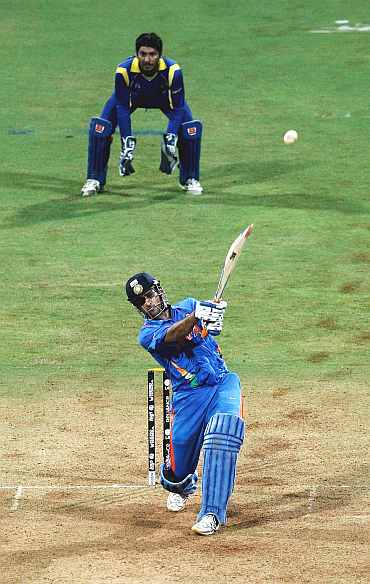
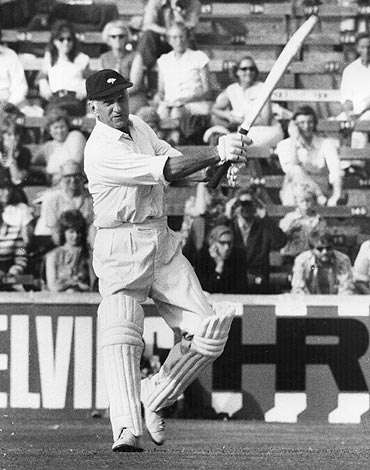
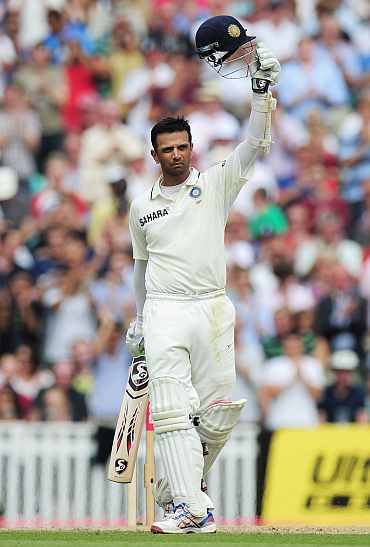
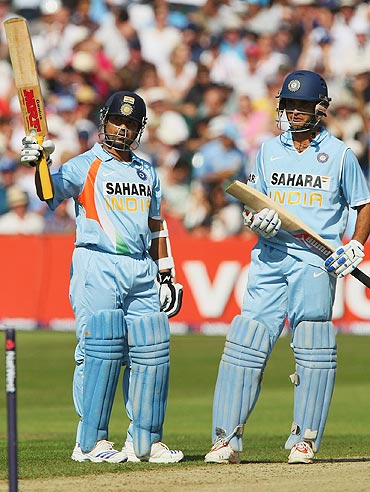
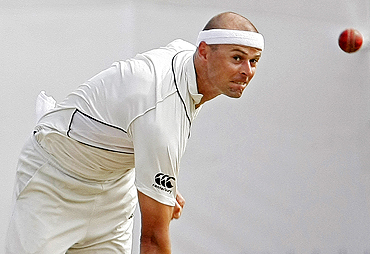
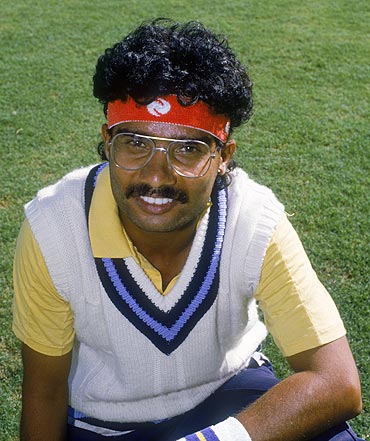
Comment
article